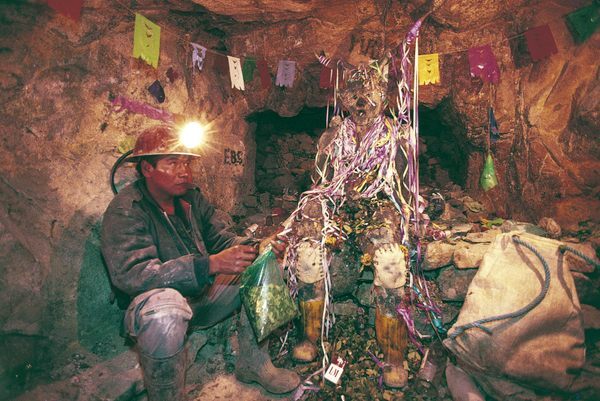IF A MINER STRIKES A rich vein of silver in Cerro Rico, a mountain looming over the Bolivian city of Potosí, it is thanks to El Tio. If a miner is crushed to death by a loose rock in the mountain, it is also the work of El Tio.
All the miners can do to sate the ambivalent spirit that guards the mountain in the heart of the Andes is leave offerings. The mines are home to more than 600 shrines in his likeness, which the men ritually soak in liquor, bestow with lit cigarettes, and shower in coca leaves. El Tio also accepts the blood of llamas. The church-going miners are happy to oblige.
It’s no exaggeration to say that El Tio’s dark domain shaped the modern world. The mountain was once home to the greatest silver deposit on earth, and its extraction by imperial Spain on the backs of slaves bankrolled their conquest of the New World and fueled the European Renaissance.
By 1600, Bolivian silver had increased the supply of exchangeable currency throughout Europe eightfold; Macalester College Anthropology professor Jack Weatherford calls Potosí “the first city of capitalism.”
Somewhere between four and eight million Quechuan Indians and enslaved Africans died mining the mountain, earning “The Rich Hill” a darker, if not more accurate nickname: “The Mountain That Eats Men.”


